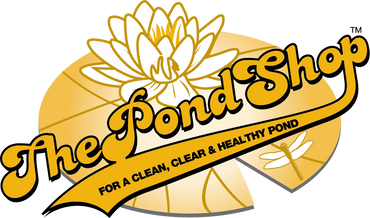What is "Pond Muck?"
Pond muck is the thick, sludgy layer of organic material that builds up at the bottom of a pond over time. It’s made up of decaying leaves, algae, fish waste, dead plants, and other organic debris. As this material breaks down, it creates a soft, blackish or brownish sludge that can release gases like methane and hydrogen sulfide, sometimes giving off a foul odor.
Muck can affect water quality, making the pond murky and reducing oxygen levels, which isn’t great for fish and other aquatic life. It can also encourage the growth of more algae and weeds.
People often remove pond muck through methods like raking, dredging, or using natural treatments like beneficial bacteria to help break down the organic matter. There are also aerators and pond vacuums designed for this kind of maintenance.
Why should I manage my Pond Muck?
Removing pond muck has a ton of benefits — not just for how the pond looks, but for the health of the entire ecosystem. Here’s why it’s worth doing:
1. Improves Water Quality:
- Clearer Water: Muck releases particles that make the water cloudy and murky. Removing it keeps the water cleaner and more transparent.
- Better Oxygen Levels: As muck breaks down, it uses up oxygen, which fish and plants need. Less muck means more oxygen for everything living in the pond.
2. Reduces Foul Odors:
- Decomposing organic matter in pond muck releases gases like methane and hydrogen sulfide — the "rotten egg" smell. Getting rid of muck eliminates that.
3. Controls Algae and Weeds:
- Muck is full of nutrients like phosphorus and nitrogen — the perfect fuel for algae blooms and invasive aquatic weeds. Less muck means fewer algae problems.
4. Healthier Fish and Wildlife:
- More oxygen, cleaner water, and reduced toxins create a healthier environment for fish, frogs, and other pond life.
- Fish are less stressed and more active when water quality improves.
5. Prevents Pond From Getting Too Shallow:
- Over time, muck builds up and makes the pond shallower, which can lead to overheating and more algae growth. Removing it helps maintain the pond’s proper depth.
6. Reduces Risk of Fish Kills:
- When muck decomposes, it can cause sudden drops in oxygen levels, especially in hot weather — sometimes leading to fish kills. Keeping the pond floor clear prevents that.
7. Looks Better:
- Clean water with less debris and fewer algae makes the pond more attractive and enjoyable — whether for relaxing, swimming, or landscaping.
8. Slows Down Future Muck Buildup:
- Once the muck is gone, it’s easier to maintain the pond with aeration, plants, and bacteria treatments — so the problem doesn’t come back as fast.
How to control or eradicate Pond Muck
Getting rid of pond muck takes a mix of physical cleanup and improving the pond’s natural balance. Here’s a breakdown of the best ways to do it:
1. Manual Removal:
- Raking/Dredging: Use a pond rake or muck dredge to physically pull out the sludge. This works well for small ponds or areas near the shore.
- Pond Vacuum: For small to medium ponds, pond vacuums suck up muck without disturbing fish or plants too much.
2. Aeration:
- Adding an aerator or fountain increases oxygen levels, helping beneficial bacteria break down organic matter faster and preventing future muck buildup. Bottom-diffused aerators are best because they circulate oxygen through the entire water column.
3. Beneficial Bacteria:
- Muck-reducing pellets and other beneficial bacteria treatments break down organic matter naturally. These bacteria eat up dead plant material and fish waste, helping clear the sludge over time.
- Make sure to pick bacteria designed for pond muck - such as L.S.C.(Liquid Super Concentrate), Bio-Buster Pellets, or Bio-Clear LQ - and use them regularly for the best results.
4. Barley Straw or Extract:
- Barley straw releases natural compounds as it breaks down, helping prevent algae growth and keeping water clearer, which slows muck accumulation. Barley straw extract is a liquid product derived from barley straw that functions in a similar fashion, typically used for smaller applications such as water gardens and small ponds.
5. Plants and Natural Filtration:
- Add aquatic plants like water lilies, cattails, or pickerelweed to absorb excess nutrients, which keeps algae and muck from forming.
- Floating plants like water lettuce or water hyacinth also help by providing shade and reducing the amount of sunlight algae needs to grow.
6. Prevent Future Buildup:
- Skim leaves and debris regularly, especially in the fall, using a pond skimmer net or rake.
- Use pond netting to catch falling leaves.
- Avoid overfeeding fish, and don’t over-fertilize plants around the pond to limit nutrient runoff.
7. For Serious Muck: Dredging
If the muck is really thick and widespread, professional pond dredging might be necessary. It’s a more intense (and expensive) process but clears everything out and resets the pond’s bottom.
